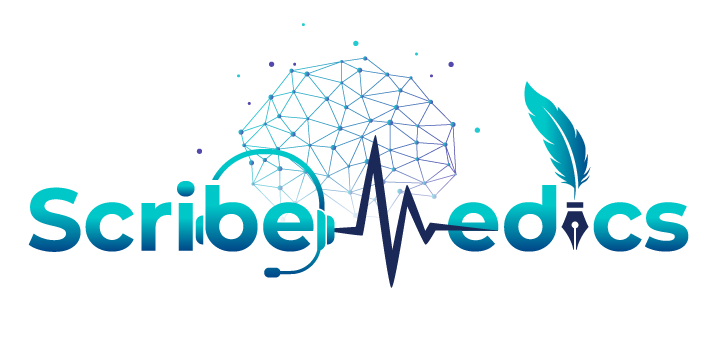Let’s be honest – most of us fear high hospital bills more than the diagnosis. High medical bills are a problem that has been looming over the health industry for a long time now. While errors are one of the key factors, it is high time to explore the other challenges in medical billing that are working behind this surge.
Medical bills are a major concern for the service users as they face the heat of unexpectedly higher bills more often. This is primarily because of the coding errors. However, many other factors are behind the soaring challenges in medical billing services. This informative blog aims to untangle the knots and make you more aware of those challenges for an improved patient experience.
Understanding Medical Billing
Medical bills are a fundamental aspect of determining the overall patient experience and the growth of the healthcare sector. Medical billing services include creating bills, submitting them to insurance companies, and following up. The key components of billing involve,
- Patient Registration: Collect patient details and ensure they align with the insurance plan before rendering the services.
- Medical Coding: Assign codes to the diagnoses and procedures per the latest coding standards.
- Claim Preparation: Follow the codes closely to prepare a health insurance claim covering service costs.
- Claim Submission: Submit the prepared insurance claim according to the payer-specific process to maintain adherence.
- Adjudication: After the claim review, the payment is determined based on the chosen plan and other related factors.
- Payment Posting: Record the payment made by the insurance company and apply for adjustments accordingly.
- Denial Management: Resubmit the rejected insurance claims after making necessary corrections based on the grounds of denial.
- Patient Billing: Obtain statements that outline the payment to be made by the patient. If necessary, let them know about financial assistance programs based on eligibility.
- Follow-up: Monitor the unpaid insurance claims and follow up on the AR or Accounts Receivable.
There are two types of billing services, i.e., professional and institutional billing. Independent practitioners provide the first type, whereas the second one is for healthcare facilities. The parties that are typically involved in the online medical billing and coding process are medical billers, coders, clinicians or scribes (whoever documents), insurance providers, and patients.
Importance Of Effective Medical Billing In Healthcare Management
When it comes to proper healthcare management, the role played by efficient billing practices cannot be overlooked. Let us explore.
- Financial Sustainability: Effective billing services help to generate revenue, optimize cash flow, and control revenue leakage.
- Regulatory Compliance: Online medical billing accuracy is directly associated with compliance with HIPAA standards and payer-specific regulations.
- Trust-Building: Enhanced transparency in medical bills improves patient satisfaction and builds trust. Error-free billing services medial enable proactive cost-related communication.
- Operational Efficiency: Efficient billing practices help to reduce errors, streamline workflows, optimize resource allocation, and escalate the claim submission process.
- Data-Driven Decisions: As analytics improves the quality of reporting, the decision-making process upgrades. Strategic planning allows the company to address underperforming segments.
- Public Health Support: Correct codes ensure early intervention, accurate treatment plans, and faster recovery. The medical billing services for preventive care support public health initiatives and future research.
- Quality Care Delivery: Optimized revenue cycles enable the providers to invest in new technologies and skilled human resources, boosting the quality of care.
Key Challenges In Medical Billing & Solutions
It is understood that efficient billing practices can ensure the overall effectiveness of a healthcare setting. Let us look at some common challenges in medical billing services that have turned the health industry upside down.
1. Documentation & Coding Errors
Patient records are of great importance. These are crucial sources of information that help clinicians diagnose the underlying health conditions and plan an accurate medical intervention. Challenges like documentation errors can result in wrong code assignments, thereby causing unexpected medical bills.
Sometimes, coders assign the wrong codes despite correctly updated medical records. This is another contributing factor to excessively high bills. Therefore, documentation and coding errors account for the maximum challenges in medical billing.
Solution: It is important to improve clinician documentation with the help of certified medical transcriptionists, templates, relevant technologies, etc. For error-free coding, skilled coders equipped with new technologies are a must. Pre-bill audits can help track the gaps before claim submission.
2. Insurance Claim Denials
Medical claims are key aspects that cause healthcare costs to spike. Unpaid claims can be a headache, especially the denied insurance claims. The insurers are likely to deny a claim due to wrong information, policy lapse, prior authorization issues, missing documents, unlisted out-of-network services, etc.
In case of any of these occurrences, the insurer denies the claim, delaying payments and complicating the billing process further. Delayed payments and resubmissions affect the overall billing progress.
Solution: This medical bill challenge can be addressed by upfront patient insurance verification, seeking prior authorization beforehand, using claim scrubbing software, timely claim submission, using an appeal letter template, providing supporting documents, and ensuring accuracy in medical records and codes.
3. Regulatory Noncompliance
Insurance claim denials are inevitable when medical billing companies do not follow regulatory guidelines. This results in delayed payments and revenue loss. Nonadherence to rules like HIPAA may result in penalties and even lawsuits from the patient’s families. These legal risks indicate the fragile financial backbone of billing services, which can be broken in case of any non-compliance.
Besides operational disruptions, nonadherence to the regulations may increase the audit frequency, leading to a repayment demand surge. ScribeMedics ensures that the billing process is compliant with regulatory frameworks.
Solution: Staying updated about the regulatory changes and ensuring HIPAA-compliant documentation to avoid the legal consequences. It is advisable to hire skilled professionals. It is crucial to conduct training sessions to boost the staff’s awareness about the importance of regulatory adherence.
4. Slow Reimbursement Process
Medical billing challenges, such as a slow reimbursement process, can freeze progress and greatly affect the revenue cycle. Delayed cash flow is a key outcome that results in poor quality of care delivery. The prolonged reimbursement process can result in multiple payers, each following specific rules.
Incomplete documentation, payer policy updates, complex rules on prior authorization, and delays in claim submissions can slow reimbursement. Also, a lack of follow-ups on unpaid medical claims is another contributing factor, leading to financial strain on healthcare organizations.
Solution: A higher clean claim rate is important to eliminate this challenge. On-time claim submissions, use of real-time eligibility tools, proper authorization, adoption of CAC (Computer-assisted coding), claim status tracking, and strengthening follow-up for Accounts Receivable (AR) can help in this context.
5. Keeping Up With Advanced Technologies
With the ever-evolving healthcare technologies, a lack of awareness can create a performance gap, leading to poor quality of care. Artificial intelligence, machine learning, cloud solutions, and Blockchain technologies are slowly yet steadily transforming the medical billing service.
Technology integration can sometimes be difficult, and proper training and knowledge are necessary for higher accuracy. Poorly integrated tools and improper management of these same can disrupt the services. Also, staff may be reluctant to change and hence withdraw themselves from actively participating in training sessions, leading to inefficiency in med billing.
Solution: The medical billers and coders must be aware of the advanced technologies that can help reduce workload without compromising the quality. With improved knowledge, such challenges in medical billing can be addressed and resolved. Regular training is crucial to meet the expected outcome.
6. Data Management & Quality Control
Data mismanagement and poor quality control can pose key challenges in medical billing. Fragmented data can confuse the providers and cause inconsistency. Besides errors, duplicated data contributes to inefficient medical coding and billing practices.
Poor data organization and low quality of information affect the progress of billing and disrupt operations. Inefficient data management can give rise to interoperability-related challenges. Data-sharing issues can complicate the situation, resulting in inaccurate billing.
Solution: Implementing a robust data governance framework is ideal to avoid these billing challenges. Adopting a standardized data format and coding systems is helpful in this context. This issue can also be tackled through automation of data cleansing, daily audits, continuous training and knowledge development, establishing clear documentation standards, and utilizing professional medical billing software.
7. Rising Demand For Information
Medical claims are the foundation of an efficient billing process. With the changing policies, the health insurance companies now require more documents associated with the rendered healthcare services for more clarity over the process. This demand is directly proportional to the slowing down of coding services.
As the coders need to go through more details for precise work, it reduces their usual speed. Detailed patient data requirements create challenges in medical billing. The billing companies must keep a close eye to avoid such situations.
Solution: Establishing an automated billing system, enhancing transparency in communication, adopting intelligent data capture solutions, providing continuous education and training support, and leveraging predictive analytics can help to overcome this medical billing challenge.
8. High Training Requirements
The role of a medical biller requires specialized knowledge and skills to ensure an error-free outcome. The prime goal is to maintain the seamlessness of the billing process and close the performance gaps. Most organizations prefer certified medical billing and coding professionals to ensure operational efficiency and higher patient outcomes.
Poorly trained coders on ICD and CPT code sets are responsible for wrong codes, affecting the medical bills’ accuracy levels. Lack of proficiency in EHRs (electronic health records) management and medical billing software are key challenges of being a medical biller.
Solution: This challenge can be addressed by thoroughly evaluating knowledge gaps in the workforce and implementing training and skill development sessions to ensure the staff is up-to-date with the evolving policies and new codes.
9. Administrative Burden
While burned-out professionals are slowly outnumbering the others in the healthcare sector, it has become more important than ever to find the root cause. Administrative burden is one of the major reasons behind overworked practitioners, who are vulnerable to clinician burnout. With paperwork eating up most of the work hours of the clinicians, they work around the clock to meet the soaring healthcare demands, leaving them with a poor work-life balance.
Complex billing processes, frequent coding updates, new policy changes, etc., contribute to this surge, making it almost impossible for professionals to close the gap. As a result, documentation and coding quality deteriorate, affecting the online medical billing services. Delayed reimbursements become more frequent. Hence, this creates challenges in medical billing.
Solution: Normalizing technology utilization and addressing reluctance to change among the staff are initial steps. AI-powered documentation tools, workflow mapping, and outsourcing medical billing services can be helpful to eliminate burnout. Also, task delegation immensely helps reduce administrative burdens.
10. Managing Accounts Receivable (AR)
The financial sustainability of the healthcare operations relies on proper management of AR, or Accounts Receivable. The most common challenges in medical billing AR are delayed payments due to claim denials, frequent changes in coding regulations, staff shortage, and patient payment collection. All these factors independently or collectively make a negative impact on AR management.
Lack of transparent communication, documentation, and coding errors, as well as late filing of medical claims, can cause hindrances to the efficient management of AR. It is important to seal all the loose ends to ensure effective management of Accounts receivable and an optimized revenue cycle.
Solution: Practice management software can help to streamline billing. Verifying insurance details before treatment, prompt submission of clean claims, establishment of a robust follow-up system, offering multiple payment methods, KPI monitoring, etc., can help to combat this medical billing challenge.
11. Multiple Claim Submission
This is one of the major challenges in medical coding as it hinders the claim process. Multiple claim submissions can occur from coding errors or incomplete patient information. Sometimes, the claim is rejected due to technical bugs before being processed.
At times, it is denied by the insurance providers due to inaccurate or insufficient data or any other issues. Multiple claim submissions result in delayed payments, increased administrative burden, compliance risks, higher costs, etc.
Solution: Electronic claim submissions can help eliminate the chances of duplicate claims. The repetitive billing tasks must be automated to avoid manual errors. Standardized claim submission protocols and regular audits are necessary in this context.
12. Inaccurate Patient Details
Patient information is important as the insurers approve the medical claims based on this. Wrong details like misspelled names, wrong addresses, date of birth, insurance ID, etc., in the medical claim can result in a data mismatch.
If the insurer feels that the person submitting the claim is not the same person who is listed under their plan, they will reject the claim. Inaccurate patient details can create major challenges in medical billing process.
Solution: The medical billers must be highly attentive while filling in the patient details. The given information should be rechecked multiple times to ensure it is error-free.
13. Poor Patient Awareness of Cost
Most patients and families are unaware of the costs of their healthcare services, resulting in issues. Lack of awareness or misunderstanding on the patient’s end may cause increased medical claim denials. As the organizations are burdened with resubmissions, it costs them both time and money.
Complex insurance terms and unexpected out-of-network fees resulting in surprise bills further contribute to these challenges in medical billing. Hence, it is integral for insurance companies to spend generously on patient education so that they do not have to invest maximum time in rework.
Solution: The patients must be provided with thorough knowledge about the costs. The insurers should clearly communicate the financial implications. Besides education, they must be navigated efficiently through the complexities of health insurance plans to understand all the terms, such as the out-of-pocket maximum.
Is Medical Billing Right For You?
Med billing is one of the most crucial aspects that not only helps to streamline the healthcare services but also boosts operational efficiency. Be it a documentation error or poor attention, billing errors can become a nightmare in no time. Excessive bills resulting from coding errors affect the mental health of patients and their families. As the overwhelming healthcare facilities and burned-out care professionals are unable to meet the surging number of patients, medical billing coding online is witnessing a rise in demand.
Accurate medical bills are important to ensure quality care delivery. As more organizations and practitioners face the heat of adopting self-documentation or poor coding practices, it is evident that it will not be beneficial in the long run. Efficient and compliant billing practices are the need of the hour. Hence, if you are a clinician struggling to balance paperwork and patient consultations, opting for billing services to streamline your work is the best decision you will ever make.
Building A Successful Medical Billing Process
A healthy revenue cycle is the core of offering high-quality healthcare services. Medical claims processing is a crucial factor in determining the overall health of a revenue management system. Patient registration and insurance plan verification are the primary steps to seamless billing.
Accurate data collection is the foundation, as it reduces claim denials due to wrong patient information. Preauthorization must be sought to eliminate this contributing factor as well. A well-optimized billing process should encompass error-free documentation, EHR (electronic health records) systems management, proficient claim submission, automated posting, payment reconciliation, efficient denial management, transparent communication, and systematic follow-ups.
The challenges in medical billing practices can be overcome through HIPAA-compliant practices and staff training sessions. While monthly reviews are a must, adopting new technologies can help providers boost the overall quality of their billing process.
How ScribeMedics Can Help
You will no longer face the heat of unexpectedly high healthcare bills. As one of the best med billing companies, ScribeMedics can permanently end all the challenges in medical billing practices. With expert coders and scribes on board, ScribeMedics focuses on eliminating the roadblocks to superior patient experience.
Documentation and coding errors greatly contribute to billing complexities. Our expert medical transcription services aim to enhance the accuracy of the documentation. With reduced errors, patient records will be free from wrong details that can affect the billing process later. Thus, customers face lower claim denials, and revenue loss is prevented.
With the best medical coding services in USA, the company ensures error-free codes for diagnoses and procedures, delivering quality care. These also help to reduce the administrative burden while clinicians can focus more on patient care. Hence, ScribeMedics streamlines the billing process and benefits the healthcare professionals in every way!
FAQs
1. What is the biggest challenge in medical billing?
In today’s world, healthcare professionals encounter numerous issues, most of which are associated with coding errors. This is one of the key challenges in medical billing, as it greatly contributes to the rising healthcare burden. The higher medical bills are causing distress to the service users as they find it difficult to navigate through the complexities of the health industry.
Documentation errors are among the most common factors contributing to medical coding inaccuracies. With the wrong codes assigned, higher medical bills are inevitable. ScribeMedics has helped to streamline medical billing and coding practices. With efficient documentation, there will be no room for errors, leading to accurate bills.
2. What is the hardest thing about med billing and coding?
Coders are responsible for assigning the correct codes to diagnoses, procedures, etc., to ensure proper med billing. A wrong code can impact the entire process and result in excessive bills, eventually burdening the customers. It is broadly associated with insurance claim denials. Therefore, it is integral to maintain coding accuracy to ensure correct medical bills.
It can be said that omitting errors is the major issue that needs to be addressed by the coders. With rising errors, both in documentation and coding, the outcome will be inefficient, further contributing to the soaring healthcare costs. Medical billing companies must focus on these aspects to improve patient experience.
3. What are the most common denial codes in medical billing?
Healthcare coding and billing are the fundamental aspects of modern medical services. These are closely related to each other. Hence, inaccuracy in any of these can result in improper care delivery and poor patient outcomes. The most common denial codes are below:
- Incorrect/ Missing Modifier (CO-4): An essential modifier is mismatched with the procedure code or is missing. Automated tools can help locate this problem before submitting the claim.
- Diagnosis Coding Error (CO-11): The diagnosis code does not match the rendered healthcare service, or is not specified enough. Coders must be aware of the updated ICD-10 codes to avoid this.
- Duplicate Claim (CO-18): This issue emerges when the same claim is intentionally or unintentionally submitted multiple times without accurate modifiers. Relevant software should be used to flag the duplicates.
- Invalid/ Missing Authorization (CO-15): Prior authorization was not sought for a specific service, or a false authorization number was submitted. Pre-authorization verification is necessary to avoid such denial codes.
4. What is the golden rule in coding and billing?
As the challenges in medical billing industry surge, it is evident that more steps need to be undertaken to ensure higher patient satisfaction. It is advisable to follow the golden rule of healthcare coding and billing, implying that it never occurred if the documentation does not include any service. This emphasizes the importance of efficient documentation practices and their connection with coding accuracy.
According to this golden rule, accurate documentation is the foundation of correct code assignment, thereby ensuring speedy recovery. Documentation errors can misguide the coders, as they end up assigning the wrong codes. Hence, correctly updated medical records are essential to enable the highest quality of care outcomes.
5. What is RCM in medical billing?
Revenue Cycle Management (RCM) refers to a process that is responsible for overseeing the financial transactions in the health industry. RCM focuses on minimizing insurance claim denials, adhering to the relevant billing standards, enhancing cash flow, lowering administrative costs, and improving patient experience with boosted transparency in the medical bills.
The key components of this process involve insurance verification, patient registration, medical coding, charge capture, payment posting, claim submission, denial management, patient billing, KPI monitoring, and tracking Accounts Receivable (AR). The challenges in RCM include frequent coding updates, high deductibles, lack of staff training, complex health policies, and compliance risks.
6. What does CPT stand for?
The full form of CPT is Current Procedural Terminology. It was developed by the AMA (American Medical Association). This medical code set helps to translate the records into codes based on the surgical and medical procedures and diagnoses. The main objective of this code set is to ensure higher levels of medical coding and billing accuracy.
The CPT codes help providers communicate the medical services rendered to insurance companies. In other words, these codes help to complete the medical billing services seamlessly. It results in maximized claim approvals and lower out-of-pocket costs. To sum up, AMA maintains CPT codes to ensure accurate medical bills that are less likely to face denials. ScribeMedics offers expert coding services to provide a permanent solution to medical errors.
7. What is PR1, PR2, and PR3 in medical billing?
Online medical billing encompasses various key terms to ensure accurate bills that do not face rejection from insurers. The terms PR1, PR2, and PR3 stand for deductible amount, coinsurance amount, and copayment amount, respectively. PR1 refers to the minimum amount that the patients must pay initially, and the exhaustion of which marks the start of the insurance coverage. This term highlights the service users’ deductible.
PR2 signifies the overall cost-sharing percentage between the service user and the health insurance organization. Regarding PR3, it is a fixed amount that the service users pay for the covered medical service. These terms help to distinguish the financial responsibilities of the patients. ScribeMedics can provide organizations with the best medical billing service in USA.
8. What are Category 3 codes in medical billing?
This is directly connected to the claim process. Any error in the bill can automatically affect the overall claim submission process. The category 3 CPT codes are numeric codes used in data collection and evaluation. These codes outline new, developing, or experimental healthcare technologies or services.
As for the format of these codes, they contain 5 characters and end with T. The American Medical Association (AMA) reviews the Category 3 codes twice a year. Unlike the Category 1 codes, they do not have any specific Relative Value Units (RVUs). As these codes are not guaranteed for reimbursement, it is crucial to go through the payer-specific policies.
9. What is 22 denial code in medical billing?
The denial code 22 refers to a rejection driven by the insurer’s belief that another active health insurance plan must be billed before proceeding with the current claim. In such cases, the service users mostly have multiple active insurance plans. Non-billing of the primary insurance policy and outdated or missing COB (Coordination of Benefits) information also contribute to one of the key challenges in medical billing.
There are certain steps to be undertaken to solve this issue. The patient should be contacted to learn about their primary and secondary policies. Different factors need to be assessed before making the final decision on the correct primary insurance policy. Ensuring the COB details are updated is crucial to avoid denial code 22. Also, if the claim is submitted to the secondary provider, an EOB (Explanation of Benefits) must be submitted alongside.
10. What is the most common modifier in medical billing?
Modifier 25 is regarded as the most common, as it is essential for escalating claim reimbursement. This modifier enables the providers to prepare a separate bill for an evaluation and management service where they provide two different services during the same visit. For instance, the patient visited for suturing a wound, but they also got a diagnosis of diabetes during that appointment.
The E/M service should be distinct from the medical procedure performed. Modifier 25 applies to patients who satisfy the above-mentioned condition only. However, incomplete documentation and overuse should be avoided.
11. What is the future of med billing?
The future of billing seems promising, with new technological innovations and digital practices that support medical billers. The healthcare burden is expected to be minimized with the intervention of artificial intelligence (AI), machine learning, cloud-based solutions, etc. As the patients become more aware of the complex health insurance terms, it will make an impact on their cost-related decision-making.
With documentation and coding errors almost fading due to improved practices, the number of denied claims will also go down. This will streamline the billing process and help practitioners and companies to overcome the challenges in medical billing industry.
Dinesh Kumar is a healthcare workflow architect and clinical documentation expert with over a decade of real-world experience supporting physicians across multiple specialties in the United States. As the Co-Founder of ScribeMedics, he has helped transform how medical practices handle documentation, coding, and administrative workflows, reducing burnout, improving patient flow, and enabling clinicians to reclaim their day.
Since 2013, Dinesh has worked closely with providers on the front lines of patient care. Over the years, he witnessed a recurring problem: clinicians were drowning in administrative work, spending hours after clinic hours updating charts, reconciling notes, and managing documentation backlogs. Instead of accepting this as “part of the system,” he decided to fix it.
Under his leadership, ScribeMedics has grown into a global hybrid scribing and documentation support company known for accuracy, compliance, and reliable workflows. From medical scribes and CPC-certified coders to virtual back-office support, his teams help multispecialty practices increase revenue integrity, reduce charting time, and improve patient-physician satisfaction.
Dinesh works with healthcare providers, practice owners, and attorneys who want streamlined documentation, better reimbursement outcomes, and more efficient operations. His approach blends empathy, process engineering, and deep domain expertise to create systems that work, day after day.
When he isn’t optimizing clinical workflows, Dinesh mentors documentation teams, trains young professionals, and speaks about burnout prevention, workflow design, and the future of hybrid AI-driven scribing.









 Medical Transcription
Medical Transcription Medical Billing
Medical Billing Medical Coding
Medical Coding